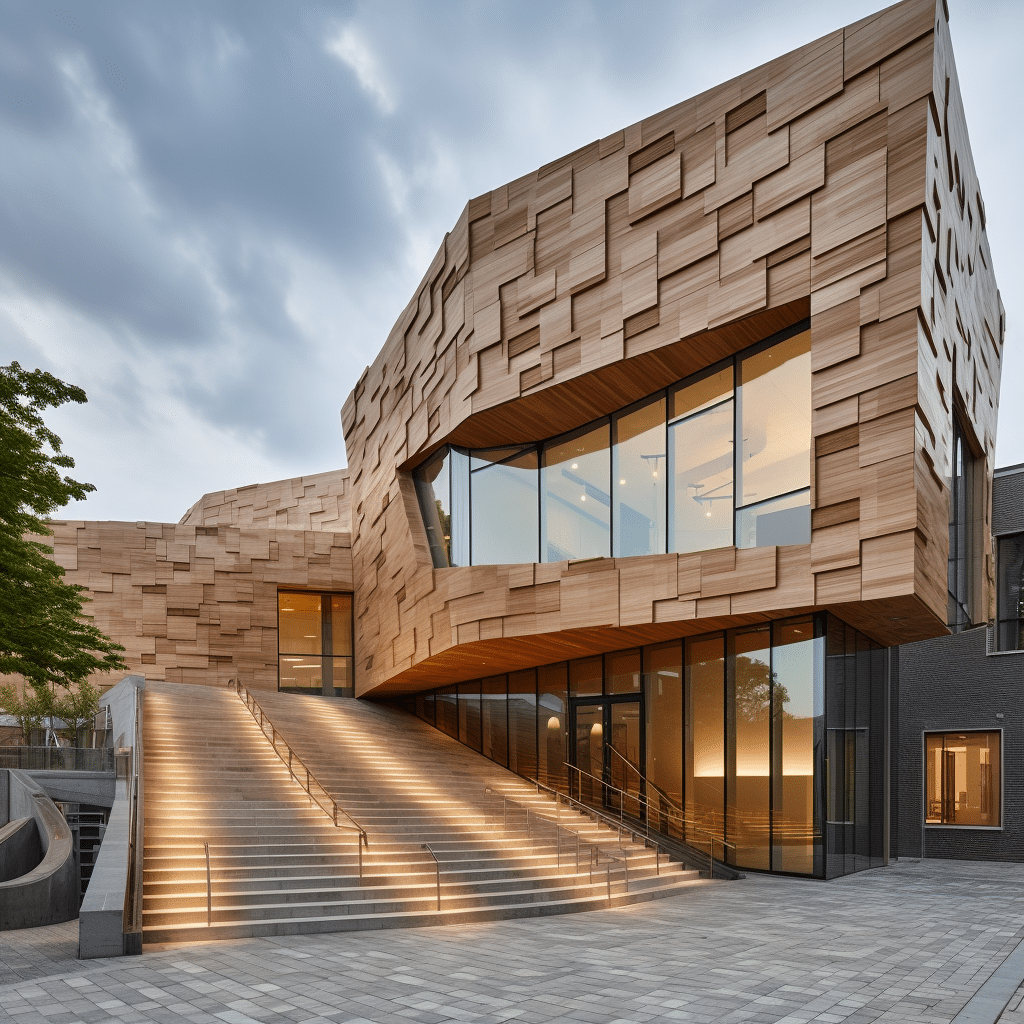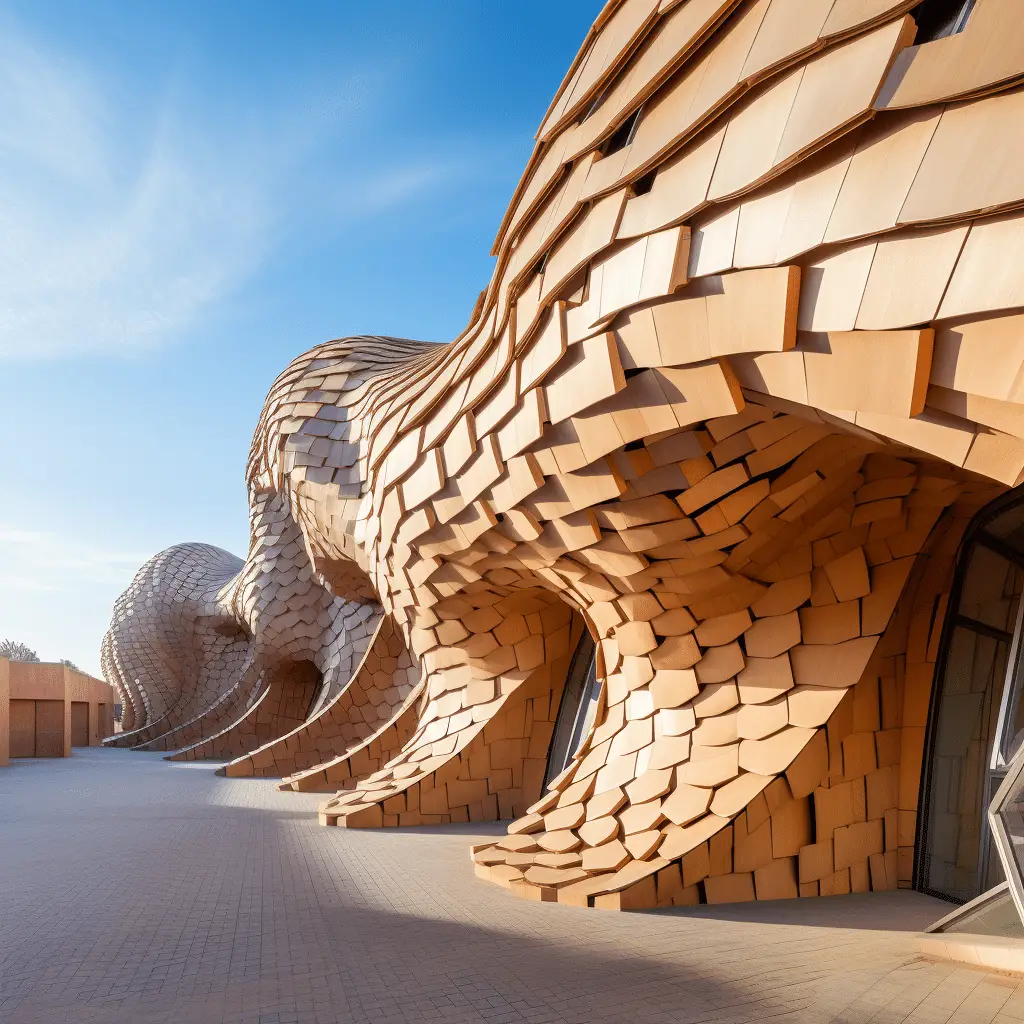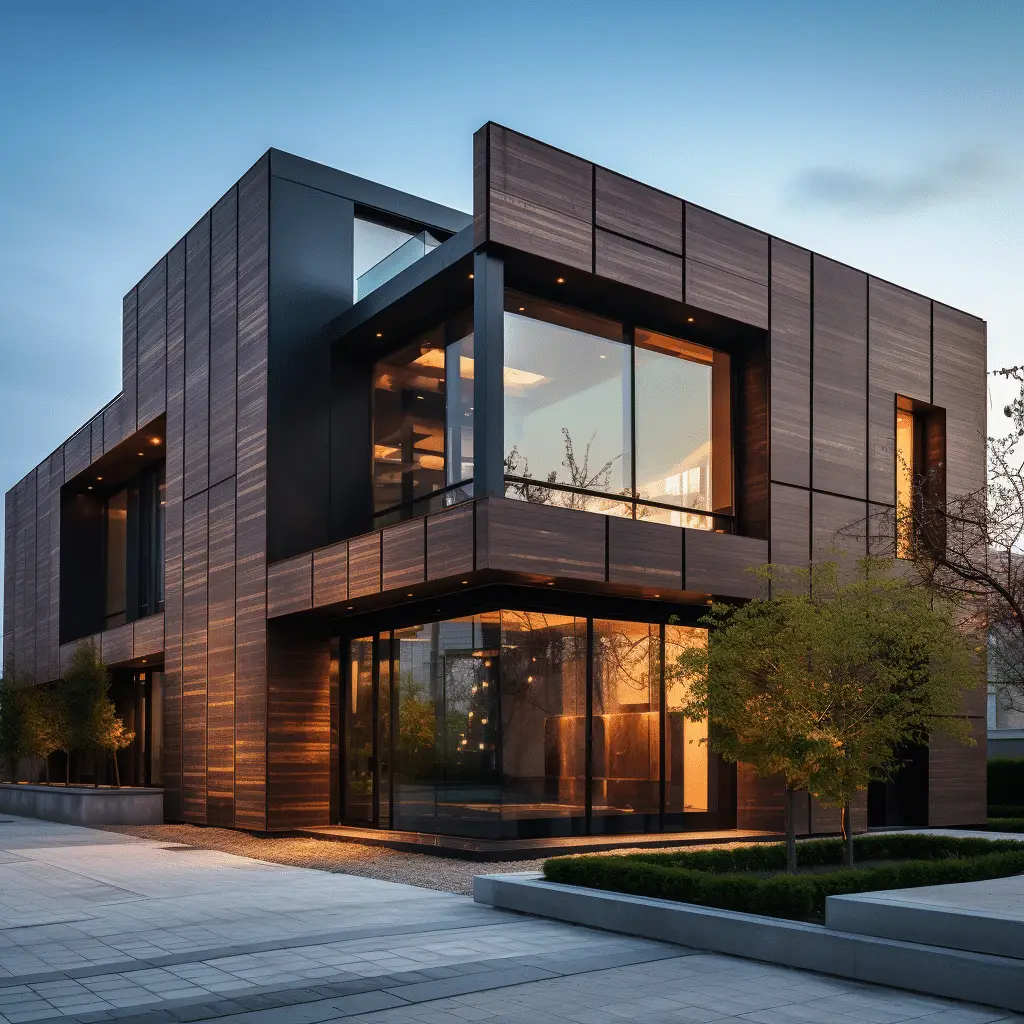Diverse Building Materials: Strength, Durability, and Aesthetics
In the construction industry, a wide range of materials is used to create structures that are not only functional but also aesthetically pleasing. These materials play a crucial role in the success of any construction project, providing the necessary strength and durability. Architects and engineers consider factors such as cost, suitability, and local regulations when selecting the materials to be used.
Some of the most commonly used building materials include concrete, steel, wood, stone, masonry, bamboo, construction foam, glass, and aluminum. Each material has its own unique properties and applications, making them suitable for different aspects of construction.
Key Takeaways
- Commonly used building materials are essential for the structural integrity and aesthetics of construction projects.
- Concrete, steel, wood, stone, masonry, bamboo, construction foam, glass, and aluminum are among the most popular materials used in construction.
- Material selection is influenced by factors such as cost, durability, and environmental impact.
- Proper material selection ensures the stability and longevity of structures, as well as adherence to project milestones and timelines.
- Architects and engineers carefully consider the suitability of each material for their specific project requirements.
Concrete

Concrete is a versatile and widely used construction material that offers numerous benefits in various building projects. Its flexibility and adaptability make it a popular choice for a range of construction purposes, including foundations, residential and commercial buildings, bridges, and culverts.
One of the advantages of concrete is its ability to be reinforced with steel bars, known as reinforced concrete, which significantly increases its structural strength. This makes it suitable for supporting heavy loads and providing stability in various applications.
When it comes to construction, concrete’s durability and fire resistance are noteworthy. It can withstand harsh weather conditions, extreme temperatures, and long-term exposure to moisture. Moreover, concrete has excellent soundproofing and thermal insulation properties, making it an ideal choice for buildings where noise reduction and energy efficiency are important considerations.
Advantages of Concrete:
- Durable and long-lasting
- Flexible and adaptable
- Structurally strong, especially when reinforced with steel
- Offers excellent soundproofing and thermal insulation
- Can be modified for specific needs, such as lightweight or waterproof concrete
Disadvantages of Concrete:
- Can be heavy and require robust support during construction
- May require skilled labor and specialized equipment for proper installation
- Initial cost can be higher compared to other building materials
| Advantages of Concrete | Disadvantages of Concrete |
|---|---|
| Durable and long-lasting | Can be heavy and require robust support during construction |
| Flexible and adaptable | May require skilled labor and specialized equipment for proper installation |
| Structurally strong, especially when reinforced with steel | Initial cost can be higher compared to other building materials |
| Offers excellent soundproofing and thermal insulation | |
| Can be modified for specific needs, such as lightweight or waterproof concrete |
Section 3: Steel
Steel is a versatile and widely used construction material in the industry. It offers various benefits, including its strength, durability, and ease of use. Steel is commonly used for structural sections, roofing products, and internal fixtures in buildings. Its high tensile strength allows for the creation of robust structures that can withstand heavy loads and harsh weather conditions.
When it comes to structural sections, steel beams and columns are popular choices due to their ability to support heavy loads and provide stability to a building. These sections are commonly used in the construction of bridges, commercial buildings, and high-rise structures. Its strength and versatility make it an ideal material for these applications, ensuring safety and longevity.
Benefits of Steel in Construction
- Strength: Steel is known for its high strength-to-weight ratio, making it an excellent choice for load-bearing structures.
- Durability: Steel is highly resistant to corrosion and has a longer lifespan compared to other construction materials.
- Fire Resistance: Steel has inherent fire resistance properties, which can enhance the safety of a building.
- Design Flexibility: Steel can be easily shaped and fabricated, allowing for unique architectural designs.
- Sustainability: Steel is a recyclable material, making it an environmentally friendly option.
Steel is a versatile and reliable construction material that can be used in various applications. Its strength, durability, and design flexibility make it a popular choice among architects and engineers. Whether it’s for structural sections, roofing, or internal fixtures, steel provides the necessary strength and stability for a wide range of construction projects.
| Application | Benefits |
|---|---|
| Structural Sections | High load-bearing capacity |
| Roofing | Durability and fire resistance |
| Internal Fixtures | Strength and design flexibility |
Wood
Wood is a widely used construction material that offers versatility, durability, and aesthetic appeal. It is commonly used in various elements of a building, including walls, floors, ceilings, and interiors such as door and window frames. The unique properties of wood make it a popular choice for construction projects.
Strength and Durability
Wood has excellent strength-to-weight ratio, making it a strong and reliable material for structural applications. It can withstand heavy loads and provide stability to the overall structure. With proper treatment and maintenance, wood can be incredibly durable, lasting for generations.
Insulation and Soundproofing
Wood provides good insulation properties, helping to regulate temperature and reduce energy consumption. It acts as a natural insulator, keeping the building warm in winter and cool in summer. Additionally, wood has sound-absorbing qualities, reducing noise pollution and creating a quieter and more comfortable living or working environment.
| Advantages of Wood as a Construction Material | Disadvantages of Wood as a Construction Material |
|---|---|
|
|
“Wood is a versatile and sustainable construction material that adds warmth and character to any project. Its natural beauty and inherent properties make it a preferred choice for both traditional and modern designs.”
When using wood as a construction material, it is crucial to select the right type of wood for each application. Different species and grades of wood offer varying levels of strength, durability, and resistance to moisture and pests. Consulting with architects, engineers, and wood experts can help ensure the proper selection and use of wood in construction projects.
An Overview of Commonly Used Building Materials
Section 5: Stone
Stone is a versatile and enduring construction material that finds several applications in the building sector. It is often employed in masonry works, where stones are meticulously put and bound together with mortar to form walls, dams, and bridge piers. Stone is often utilized as rough aggregate and ballast in construction projects, providing stability and support to structures.
One of the key advantages of stone is its vast selection of finishes, such as marble, granite, and limestone, which contribute both beauty and practicality to a building. Stone finishes are noted for their exceptional polish and visual appeal, making them a popular choice for interior and outdoor applications. Additionally, stone has natural insulating capabilities, keeping buildings cooler in summer and warmer in winter.
However, it is crucial to note that stone is a heavy material, which might offer logistical issues and increase shipping expenses. Additionally, stone is not an efficient insulator and may require additional insulation techniques to regulate temperature and energy usage. Nonetheless, stone remains a highly durable and visually appealing choice for construction projects, particularly when robust and long-lasting structures are sought.
| Advantages of Stone | Disadvantages of Stone |
|---|---|
| • Versatile and enduring | • Heavy material, posing logistical challenges |
| • Wide range of finishes | • Limited insulation properties |
| • Provides natural insulation |
Section 6: Masonry – Durable Construction Material for Load-Bearing Walls and Foundations
Masonry is a popular building material due of its fire resistance. Bricks or concrete blocks joined with mortar form a robust construction. Masonry is used to make load-bearing walls. These walls transfer load from upper floors to the foundation, maintaining structure stability.
Masonry is used for foundations and load-bearing walls. Masonry foundations stabilize the structure and prevent settling. Masonry foundations are strong and durable, making them suited for residential and commercial construction.
With veneer masonry, masonry is very attractive. A building’s veneer is a thin covering of bricks or stones applied for decoration. This technique lets architects develop unique, attractive designs that improve the building’s appearance. To achieve the required appearance, veneer masonry can be combined with other construction materials.
The Benefits of Masonry Construction
- Masonry provides excellent thermal insulation properties, helping to regulate the temperature inside a building and reduce energy consumption.
- It is a low-maintenance material that requires minimal repairs and upkeep over time.
- Masonry is resistant to pests and can withstand harsh weather conditions, enhancing the longevity of the structure.
- It offers good soundproofing qualities, reducing noise transmission between rooms and from external sources.
“Masonry is a reliable and cost-effective choice for construction projects that require strength, durability, and aesthetic appeal.” – Architect John Smith
| Masonry Applications | Advantages |
|---|---|
| Load-bearing walls | Provides structural support and stability |
| Foundations | Ensures stability and prevents settling |
| Veneer masonry | Enhances aesthetics and design flexibility |
Other Popular Construction Materials
In addition to the commonly used building materials discussed earlier, there are several other popular options that architects and engineers consider for construction projects. These materials offer unique characteristics and benefits that make them suitable for specific applications.
Bamboo
Bamboo is a versatile and ecological material that has gained favor in the construction industry. It is noted for its strength, flexibility, and quick development, making it perfect for different structural and decorative reasons. Bamboo can be utilized for residential buildings, bridges, flooring, and furniture. Its natural visual appeal gives a sense of elegance to architectural projects.
Construction Foam
It provides excellent heat resistance and energy efficiency, reducing the need for excessive heating or cooling. Construction foam is lightweight, durable, and easy to install, making it a preferred choice for enhancing the energy efficiency of structures.
Glass
Transparent, attractive, and durable, glass is a versatile construction material. For facades, windows, doors, and internal walls, it lets natural light in and creates a sense of space. Glass is ideal for noise-sensitive situations due to its high acoustic insulation. Tempered or laminated glass improves strength and safety.
Aluminum
Aluminum is a sustainable resource that can replace more conventional building supplies like wood. It’s easy on the body, resistant to corrosion, and provides solid support. Aluminum is versatile and can be utilized in a variety of applications. Because of its adaptability, it can be shaped into complex patterns while yet standing the test of time.
| Material | Advantages | Applications |
|---|---|---|
| Bamboo | Strength, flexibility, sustainability | Residential buildings, bridges, flooring, furniture |
| Construction Foam | Thermal insulation, energy efficiency | Building insulation |
| Glass | Aesthetic appeal, transparency, acoustic insulation | Facades, windows, doors, partitions |
| Aluminum | Lightweight, corrosion resistance, structural stability | Windows, doors, roofing, facades |
Importance of Material Selection

When it comes to construction projects, the selection of materials is a critical decision that can greatly impact the success of the project. The choice of construction materials affects various aspects, including durability, cost, and environmental impact. Architects and engineers must carefully consider these factors to ensure that the selected materials are suitable for the specific project requirements.
| Construction Materials | Durability | Cost | Environmental Impact |
|---|---|---|---|
| Concrete | High | Moderate | Medium |
| Steel | High | High | Medium |
| Wood | Moderate | Low | Low |
| Stone | High | Moderate | Low |
| Masonry | High | Moderate | Medium |
Material choices must also include environmental impact. Environmental awareness and sustainability have made eco-friendly materials essential in the construction sector. Choosing low-carbon or recyclable materials reduces the project’s ecological imprint. Builders and developers may help the environment and satisfy environmentally sensitive clientele by using eco-friendly products.
In conclusion, choosing construction materials is important. For best outcomes, materials should be assessed for durability, affordability, and environmental impact. To ensure successful construction projects, architects and engineers can carefully analyze these criteria and use materials that are structurally sound, cost-effective, and ecologically friendly.
Conclusion
Commonly used building materials play a crucial role in the success of any project. Understanding their characteristics, suitability, and cost considerations is essential for architects and engineers. Concrete, steel, wood, stone, masonry, bamboo, construction foam, glass, and aluminum are just a few examples of materials that provide the structural integrity and aesthetic appeal required in construction.
Each material has its own unique strengths and uses. Concrete, with its versatility and ability to form any shape, is ideal for foundations and various structures. Steel, known for its high tensile strength, is commonly used in roofing products and internal fixtures. Wood, a cost-efficient and environmentally sustainable option, is versatile and used in walls, floors, and structural frames. Stone offers durability, a range of textures, and is commonly used in masonry works. Masonry, with its durability and fire resistance, is a popular choice for load-bearing walls and foundations.
Additionally, other materials like bamboo, construction foam, glass, and aluminum also find their place in construction projects. Bamboo provides strength and sustainability, while construction foam offers thermal insulation. Glass is used for facades and internal partitions, while aluminum serves as an eco-friendly alternative to timber.
When selecting materials, factors such as durability, cost, and environmental impact must be considered. Choosing durable materials ensures the stability and longevity of the structure, saving costs in the long run. And by opting for ecologically friendly materials, we minimize the impact on the environment and energy consumption. Architects and engineers must carefully evaluate the specific requirements of their projects to make informed decisions regarding material selection.
FAQ
What are the commonly used building materials in the construction industry?
Some of the commonly used building materials include concrete, steel, wood, stone, masonry, bamboo, construction foam, glass, and aluminum.
What is concrete and how is it used in construction?
Concrete is a construction material composed of fine and coarse aggregates mixed with cement and water. It is used for various construction purposes, including foundations, residential and commercial buildings, bridges, and culverts.
What is steel and where is it commonly used in construction?
Steel is a composite material made from alloys of iron and carbon. It is commonly used in construction for structural sections, roofing products, internal fixtures, and utilities such as underground water and power lines.
How is wood used in construction?
Wood is a versatile and durable building material used for walls, floors, ceilings, interiors such as door and window frames, and structural frames for buildings and bridges. It provides good soundproofing and insulation properties.
What is stone used for in construction?
Stone is a long-lasting building material commonly used in masonry works for walls, dams, and bridge piers. It can also be used as rough aggregate, ballast, and for damp proofing of external walls. Stone finishes, such as marble, are known for their excellent polish and aesthetic appeal.
How is masonry used in construction?
Masonry involves the use of bricks or concrete blocks bound together with mortar. It is commonly used for load-bearing walls, foundations, and decorative finishes such as veneer masonry. Masonry provides an economical building choice for multi-story buildings when reinforced with concrete.
What are some other popular construction materials?
Some other popular construction materials include bamboo, construction foam (such as polystyrene and polyurethane), glass, and aluminum.
Why is material selection important in construction?
Material selection is crucial for a successful project as it affects the stability, longevity, cost, and environmental impact of a structure. Durable materials reduce the need for frequent repairs, cost-effective materials provide long-term savings, and ecologically friendly materials minimize environmental and energy impacts.








